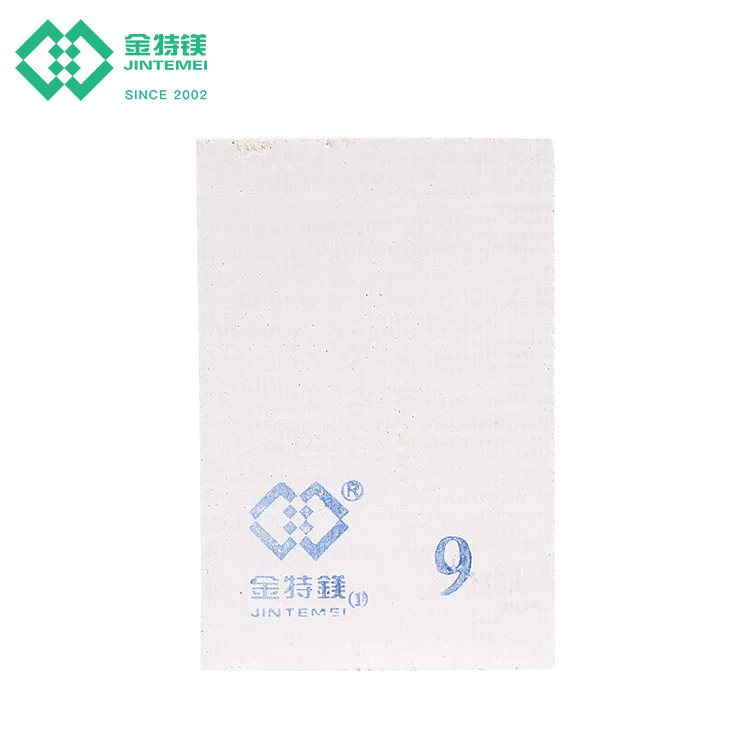Comparing Top Fire Partition Wall Board Options for Safety
Key Features of Fire-Resistant Partition Boards
Fire Rating Standards: Understanding ASTM E119 & UL Certifications
Fire-resistant partition boards are judged on their effectiveness against fire through important standards like ASTM E119 and UL certifications. The ASTM E119 test evaluates the length of time a material can resist fire exposure, while UL certifications ensure that manufacturers' claims regarding fire performance are accurate. These fire rating standards are crucial as they help users select suitable materials for specific applications, ensuring safety and compliance with building codes. According to statistics, the use of certified materials in construction significantly lowers the likelihood of fire-related damage, thereby minimizing risks to life and financial losses.
Core Materials: Magnesium Oxide (MGO) vs Traditional Options
When comparing core materials, Magnesium Oxide (MGO) boards stand out against traditional gypsum boards for their superior fire resistance, which can last up to 120 minutes. Unlike gypsum, MGO boards are eco-friendly and highly resistant to moisture damage, making them a reliable option in various environments. Reports suggest that in high-risk fire areas, the installation of MGO boards is increasingly preferred due to these attributes. As these boards provide enhanced durability and safety, they are rapidly becoming a top choice in fireproof wall board applications.
Thermal and Acoustic Insulation Benefits
Fire-resistant partition boards, particularly those made of MGO, offer considerable thermal insulation benefits, contributing to reduced energy costs by maintaining indoor temperatures. Moreover, their acoustic insulation capabilities are superior, effectively reducing noise transmission, and making them ideal for both commercial and residential settings. Research indicates that buildings equipped with high-quality fireproof insulation boards exhibit less temperature fluctuation, leading to an improved indoor environment. This combination of thermal and acoustic advantages positions fireproof panels as a preferred choice for enhancing overall building performance.
Top Fire Partition Wall Board Options for Safety
Quick Installation Wall Material: Fireproof & Sound Insulation
Opting for quick-installation wall materials, such as MGO wall boards, streamlines construction processes and reduces costs significantly. These boards are engineered for rapid setup, often cutting down labor costs and project timelines by up to 30%, according to recent construction industry statistics. Furthermore, they offer superior sound insulation and adhere to rigorous fire safety standards, which are crucial in various construction scenarios. Such features make them an ideal choice for projects demanding prompt, efficient installations with robust safety compliance.

Lightweight Class A1 MGO Ceiling Panels
Class A1 MGO ceiling panels are revolutionizing ceiling installations with their lightweight design. This feature makes them easy to handle and install, subsequently reducing ceiling load and the stress placed on structural elements. They are not only recognized for their fire resistance but also for providing a balance of aesthetics and safety in both residential and commercial buildings. Industry data highlights that the use of lightweight materials, like A1 MGO panels, can lower structural costs while enhancing overall building performance over time.

Cost-Effective Custom-Length Fireproof Boards
Custom-length fireproof boards are efficient and economical solutions for modern construction needs. They minimize waste during installation, which is particularly beneficial for projects with unique architectural requirements, resulting in significant cost savings. By fitting various design specifications seamlessly, these versatile boards promote both safety and aesthetic value. Reports from industry experts suggest that opting for custom-length solutions not only enhances resource efficiency but also aligns with sustainable building practices, supporting a more eco-friendly construction approach.

Compliance and Installation Best Practices
Meeting ASTM E84 Class A Flame Spread Requirements
Understanding ASTM E84 flame spread requirements is crucial for selecting suitable fireproof materials, such as magnesium oxide boards (MGO boards), to withstand fire effectively. These standards ensure that materials meet Class A criteria, which mitigates flame spread and contributes to overall building safety. Not only does compliance bolster the marketability of the construction materials, but it also aligns with necessary building standards. Research indicates that buildings adhering to E84 Class A requirements experience fewer fire-related incidents and result in more favorable insurance outcomes. By prioritizing materials like MGO boards that comply with these standards, builders can enhance both safety and financial security in construction projects.
Proper Sealing Techniques for Fire Barriers
Employing correct sealing techniques is essential in maximizing the effectiveness of fire barriers. Proper sealing prevents smoke and flames from spreading through gaps, which is a critical aspect of fire safety. To ensure the integrity of barriers under fire conditions, sealants must be fire-rated and compatible with the specific materials used, such as fireproof insulation boards. Studies reveal that with proper sealing, fire resistance can be prolonged by up to 60%, providing occupants more time for evacuation. By integrating appropriate sealants into the installation of fire barriers, builders can significantly enhance the safety and structural integrity of various constructions.
Balancing Cost and Safety in Material Selection
When selecting materials for fire-resistant installations, it's essential to balance budget constraints with safety regulations. Investing in high-quality fireproof materials like MGO boards might involve higher initial costs, but they can result in long-term savings through reduced insurance costs and lower liability risks. Industry experts highlight that cheaper alternatives could compromise safety, as seen in case studies where poorly constructed facilities faced greater losses during fire incidents. Prioritizing safety over immediate cost savings not only enhances the safety of the building but also assures better durability and performance against fire hazards over time.

 EN
EN








































